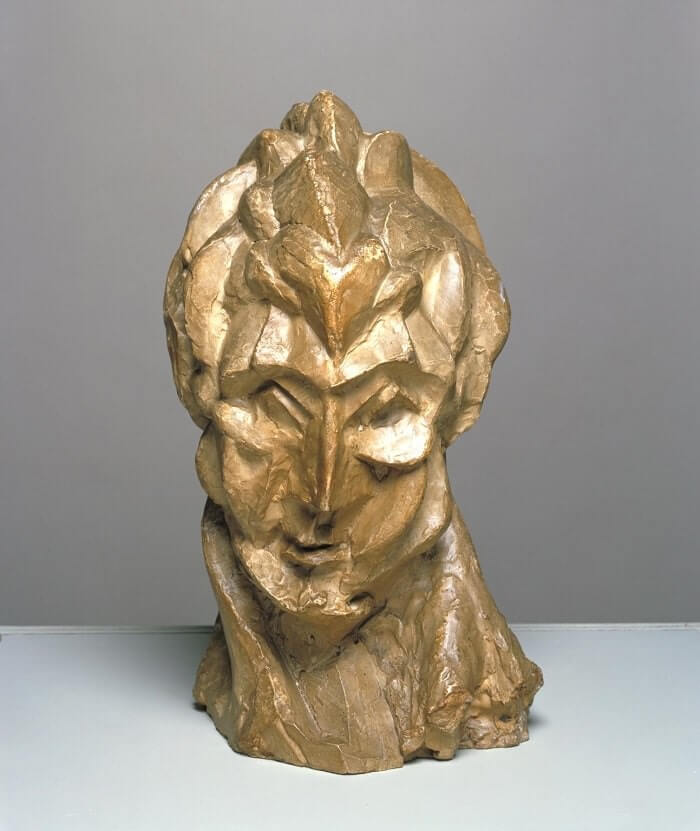Head of a Woman, Fernande, 1909 by Pablo Picasso
During the summer of 1909 Picasso produced a series of paintings representing the head and shoulders of his mistress, Fernande Olivier. Like many of his recent figurative paintings, these were highly sculptural in form and integrated the geometrical planes that were now defining early Cubism. Back in Montmartre that autumn, Picasso produced a small sculpture based upon these paintings. In some ways, Picasso's Head of a Woman, Fernande conforms to conventional sculpture. It was originally modeled in clay and forms a solid moss, its bust format recalling countless other such sculpted portraits. The handling, however, is radically different from other sculptures of the time.
The head is executed as a series of flat planes, as if the viewer is looking at the muscles beneath the exterior surface of the body. To emphasize this, Picasso cast the clay original in plaster and carved the surface with a knife. The work was later cast in bronze. Picasso's Head of a Woman, Fernande, with its jagged forms and sharply defined geometrical planar surface, constitutes the first fully developed Cubist sculpture,





















